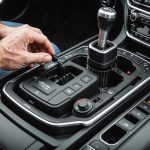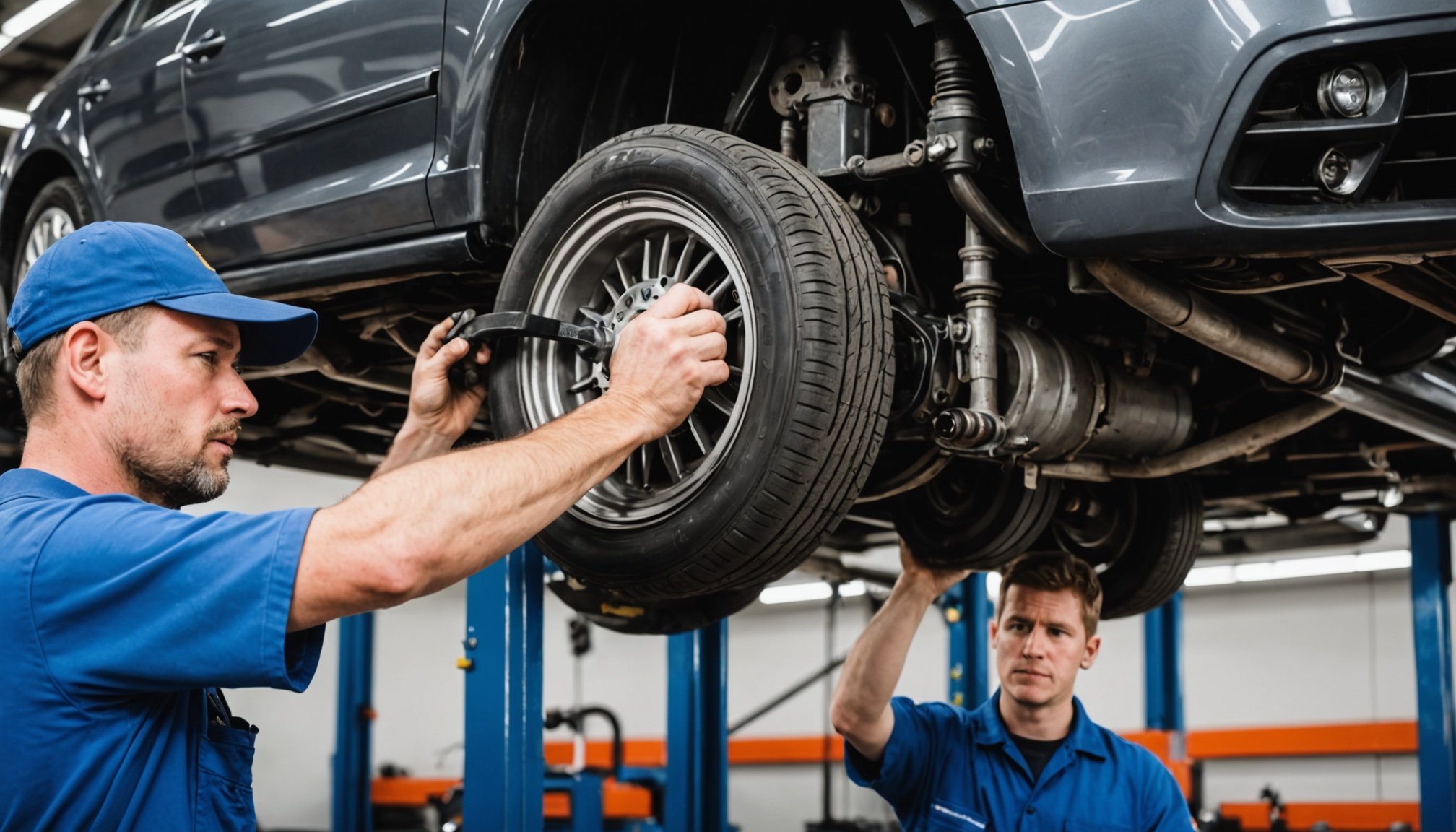Overview of Suspension Systems
Understanding suspension systems is essential for any vehicle enthusiast, especially in the context of UK cars. These systems play a crucial role in ensuring both the safety and performance of a vehicle. Essentially, suspension systems are designed to manage road handling and ride quality by absorbing and distributing the energy from road irregularities.
There are several types of suspension systems commonly used in UK cars. The most prevalent are independent suspension, where each wheel moves independently, and dependent suspension, where wheels are linked, impacting each other’s movement. Independent systems, like the MacPherson strut, offer better handling and comfort, whereas dependent systems, such as leaf spring setups, are known for their durability.
Have you seen this : Revamp your uk vehicle: the ultimate guide to upgrading with cutting-edge infotainment technology
Each suspension system is comprised of essential components, each serving specific functions. These include springs to support the vehicle’s weight, shock absorbers to dampen ride movements, and anti-roll bars to reduce body roll during cornering. Understanding these components and their roles helps in deeper comprehension of how suspension systems contribute to the overall driving experience. Such systems may differ slightly in various UK car models due to design preferences and functional requirements.
Identifying Wear in Suspension Components
Understanding suspension inspection is critical for maintaining vehicle safety. Recognising wear in key suspension components like bushings, shocks, and struts is essential. But how can you identify this wear? Wear indicators include unusual noises like clunking or squeaking, uneven tyre wear, and excessive bouncing. When these symptoms persist, a closer inspection is warranted.
In parallel : Daikoku car meet: japan’s legendary car enthusiast gathering
To perform a suspension inspection, begin with a visual examination. Check for obvious signs of damage or leaks in the shocks and struts. Inspect the bushings for cracks or splits. One effective method is the bounce test—push down hard on the vehicle’s corners and release. The car should settle after a single bounce. If it continues to bounce, further examination may be needed.
Tools and techniques are vital for detecting wear accurately. Use a flashlight for better visibility and a pry bar to check for excessive movement in components. A torque wrench ensures that bolts and nuts are tightened to the manufacturer’s specifications. Accurate inspection can prevent costly repairs and enhance driving safety. Detecting wear early helps maintain the suspension system’s integrity and performance, prolonging the life of your UK car.
Common Suspension Issues in UK Cars
When dealing with common suspension problems in UK car models, certain issues frequently arise. These include excessive tyre wear, sagging, and uneven ride height, which often indicate worn-out springs. Noisy shocks and struts can be another tell-tale sign, where knocking sounds suggest loose or damaged components.
Troubleshooting such issues requires a methodical approach. Begin by inspecting the suspension components for signs of wear, such as rust or corrosion. Pay attention to bushings and rubber parts for cracks. Test the vehicle’s stability by checking if it rocks back after mildly pushing the corners; stability issues often point to problems with shock absorbers.
For these common suspension problems, recommended actions include checking alignment and balancing tyres to address uneven wear. Replacing worn-out springs or shocks can mitigate sagging or noise issues. Remember, timely action prevents further damage and ensures vehicle safety.
Understanding and identifying these issues enables efficient troubleshooting, bolstering your confidence in DIY maintenance. However, should problems persist, professional guidance from a certified mechanic is advisable to ensure precise corrective measures, especially for more complex issues that require specialised expertise.
DIY Suspension Maintenance Procedures
Embarking on DIY maintenance of your car’s suspension can be a rewarding venture, allowing for both cost savings and a deeper understanding of your vehicle. Before you start, ensure you have a well-lit workspace and wear protective gear for safety. Always use a car jack and jack stands to securely elevate your vehicle.
Begin with a detailed inspection. Assess the condition of components like shocks, struts, and bushings for any visible damage or wear. Replacing worn-out shocks can often be done at home using basic tools, such as spanners and sockets tailored to your car model.
Safety precautions are paramount. Never work under a car supported only by a jack—jack stands are a must for stable support. Always have a buddy present if possible, to assist in emergencies.
Here’s a shortlist of essential tools:
- Car jack and stands
- Pry bar
- Torque wrench
- Spanner and socket set
These items will cover the basics for most DIY suspension tasks. Regular maintenance not only improves vehicle longevity but also enhances performance and safety. If uncertain at any step, consulting with experienced enthusiasts or seeking professional help can prevent costly errors.
When to Seek Professional Help
While DIY suspension maintenance is rewarding, certain situations necessitate professional suspension services for safety and effectiveness. Complicated issues or those that persist despite at-home repairs should prompt a visit to a professional. Major concerns include extensive component damage, precision alignment needs, and electronic suspension systems that require specialised equipment.
Choosing the right mechanic is crucial. Look for those with a solid reputation in the automotive community and specific expertise in suspension repairs. Reading customer reviews and seeking recommendations from friends or online forums can be helpful. Ensure the mechanic uses quality parts and transparent communication regarding service costs.
Understanding what to expect during professional maintenance can ease anxiety. Generally, mechanics will conduct a thorough inspection of all suspension components, provide a detailed diagnosis, and offer repair or replacement options. They may also offer a service cost breakdown, helping you compare against other quotes.
Professional assistance guarantees precise work and can significantly enhance your vehicle’s performance and safety. It’s an investment in longstanding vehicle reliability, particularly in complex or high-risk repairs beyond a enthusiast’s skill set.
Expert Recommendations and Resources
Navigating suspension maintenance can be simplified with expert recommendations and reliable resources. For DIY enthusiasts, possessing a suspension maintenance guide is crucial, offering step-by-step instructions and preventive measures. These guides often include tips on choosing the right tools tailored for UK car suspension systems, ensuring efficient maintenance.
Automotive experts frequently recommend specific tools and brands for optimal suspension care. For instance, torque wrenches from established brands like Snap-on or Draper are highly praised for their precision and durability. Investing in quality shock absorbers, like those from Bilstein, can significantly enhance a vehicle’s performance and longevity.
When it comes to suspension diagrams and visual aids, these resources are invaluable for accurately identifying components and understanding repair techniques. Textbooks or online platforms such as Haynes Manuals provide comprehensive illustrations, aiding in both learning and practical applications.
For those seeking further insights, additional resources are abundant. Online forums, webinars, and automotive courses often feature expert advice on prolonging suspension system reliability. Joining automotive communities, like UK-based car clubs, offers networking opportunities and shared experiences, deepening knowledge and proficiency in managing car suspensions.
Visual Aids and Diagrams
Understanding suspension systems can be complex without the right visual aids to guide you. Diagrams are invaluable for pinpointing component locations and understanding how parts interact within the suspension. By illustrating how springs, shock absorbers, and anti-roll bars fit together, these resources clarify complex mechanics, making maintenance guides more accessible.
Visual aids serve as a fundamental educational tool for both novice and experienced individuals. For instance, a detailed suspension diagram can reveal the interplay between independent and dependent suspensions, particularly in UK car models. This understanding is crucial for both diagnostics and repairs.
Moreover, platforms offering comprehensive suspension illustrations, often found in automotive textbooks or digital resources, provide step-by-step visuals aiding in repairs and maintenance. These illustrations enhance comprehension by highlighting common wear areas and typical troubleshooting techniques for addressing frequent problems.
Leveraging these visual resources is critical; they simplify the learning curve and foster a more profound mastery of suspension maintenance. By integrating diagrams into your study or repair regimen, you improve both accuracy and efficiency, ensuring a thorough grasp of complex mechanical systems. Use these tools to demystify repairs, leading to informed maintenance practices and vehicle safety.











